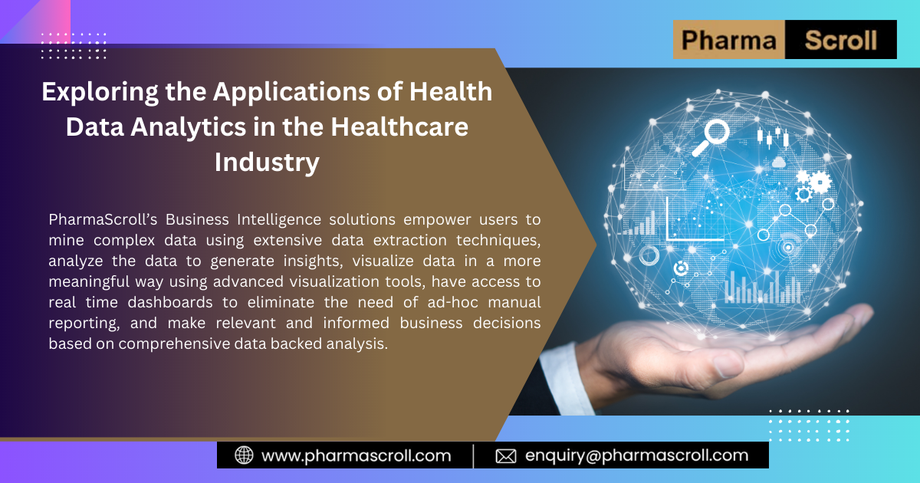Data is the new oil. This statement holds true for every industry, including healthcare. Health data analytics is the process of collecting, analysing, and interpreting health data to improve healthcare outcomes. The healthcare industry has witnessed significant advancements in technology in the last few years, and the use of health data analytics is revolutionising the industry. The healthcare system generates a massive amount of data, and health data analytics can help derive insights to improve medical care, reduce costs, and enhance patient experience.
In this, we will explore some of the applications of health data analytics in the healthcare industry.
Improving Patient Outcomes:
The use of health data analytics can help medical professionals make more informed decisions about patient care. By analysing patient data, healthcare providers can develop personalised treatment plans and improve prognosis for patients. Data from wearable devices and electronic medical records (EMRs) can be analysed to understand patient behaviour, patterns, and lifestyle choices. With this information, healthcare providers can develop strategies to prevent chronic diseases, improve adherence rates, and promote healthy behaviours.
Reducing Costs:
Healthcare costs are on the rise, and health data analytics can help reduce unnecessary expenses. By analysing data on patient outcomes, healthcare providers can identify inefficiencies and make necessary changes. For example, analysing patient data can identify patients who are at high risk of hospital readmission. By identifying these patients, healthcare providers can develop interventions that prevent hospital readmission and thereby reduce healthcare costs.
Improving Public Health:
By analysing population data, health data analytics can help address public health challenges. By analysing patient data, healthcare providers can identify early warning signs of disease outbreaks. This information can be used to provide early warning systems and response plans, thereby preventing the spread of disease. Additionally, health data analytics can be used to evaluate public health programs and assess effectiveness. With this information, public health officials can develop new programs and interventions to address public health challenges, including disease prevention, health promotion, and health education.
Enhancing Patient Experience:
In the age of patient-centered care, the patient experience is of utmost importance. By analysing data on patient experience, healthcare providers can understand patient preferences and identify areas of improvement. Data from patient feedback, surveys, and EMRs can be analysed to understand patient satisfaction rates, pain points, and communication gaps. With this information, healthcare providers can develop strategies to improve patient experience, including patient education, communication, and involvement in care decisions.
Conclusion:
The use of health data analytics is transforming the healthcare industry, and its application is endless. Health data analytics can improve patient outcomes, reduce healthcare costs, enhance public health, and enhance patient experience. However, the implementation of health data analytics also presents its own set of challenges, including data privacy, interoperability, and regulatory compliance.
To realise the full potential of health data analytics, healthcare providers must invest in the necessary infrastructure, including an integrated system of data management, data warehousing, and data analytics. The healthcare industry must also address the challenges of data privacy and data sharing to ensure that health data analytics benefits everyone.
Learn More: https://rb.gy/lgabq
Contact Us: enquiry@pharmascroll.com

